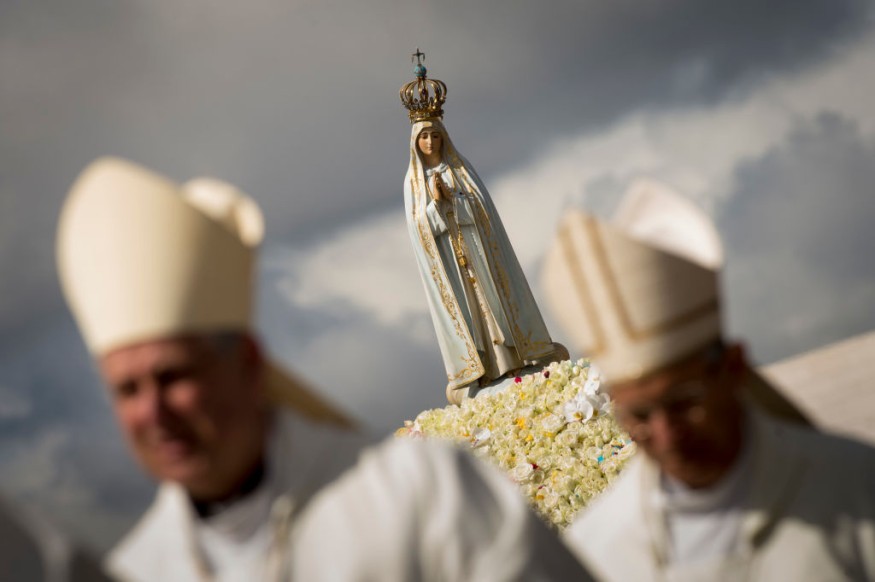Latin America: 4 Astonishing Catholic Miracles in the Region You Probably Did Not Know

Numerous miracles have occurred in various parts of Latin America throughout the Roman Catholic Church's long existence.
Even in the modern era, Catholics can look back on these miraculous occurrences and be reminded that there is more to life than what can be grasped by the five senses.
4 Amazing Miracles in Latin America Recognized by the Vatican
Many Latin American families have a deep-rooted belief in Catholic doctrine, particularly praying for God's intercession. Sometimes, their requests are granted through miracles or given as "miraculous gifts."
The belief in miracles is still prevalent among Catholics today in Latin America, even though they have been unable to explain these supernatural events. So, here are some of the most well-known Catholic miracles in Latin America recognized by the Vatican.
Argentina
On the evening of August 18, 1996, Father Alejandro Pezet performed Mass in the Church of Santa Maria y Caballito Almagro in Buenos Aires, Argentina.
A woman approached him after he finished giving out Holy Communion to inform him that she had discovered a discarded host on a candlestick at the rear of the Church.
The "host" is the bread destined to receive Eucharistic Consecration. Pezet went where he was told and discovered the tainted host. Since he could not eat it, he stored it in the Blessed Sacrament's tabernacle along with a container of water.
When he opened the Tabernacle on August 26, he was astonished that the host had become a bloody substance. Then-Cardinal Jorge Bergoglio, now Pope Francis, was notified, and he ordered a professional photograph of the host to be taken.
The pictures were captured on September 6. The photos clearly show that the host, which became a piece of bloodied flesh, had grown remarkably in size.
The host remained in the tabernacle undisturbed for several years while the entire affair was kept under wraps. Pope Francis chose to have the host scientifically tested as there was no noticeable decay even though no preservation was made.
On October 5, 1999, scientist Dr. Ricardo Castanon collected a fragment of the bloody piece in the presence of the Cardinal's agents and sent it to New York for study. Castanon did not want the research team to be biased, so he kept quiet about the host's details.
Dr. Frederic Zugiba, a renowned forensic pathologist, was one of the scientists, and he concluded that the substance was real human flesh and blood.
READ NEXT : Lenten Season in Latin America
Mexico
A retreat was hosted in October 2006 by a church in the Chilpancingo-Chilapa Diocese in Mexico. Two priests and a religious sister were giving out bread during Holy Communion in a Mass when the host she held started to discharge reddish liquid.
Bishop Alejo Zavala Castro also asked Dr. Ricardo Castanon and his team, who researched the "miracle" in Argentina, to conduct scientific research on the substance.
In 2013, the study found that "the reddish substance analyzed corresponds to blood in which there are hemoglobin and DNA of human origin." The blood type is found to be "AB."
Venezuela
In a Mass near the Finca Marian Shrine in Betania, Venezuela, a priest split the host into four pieces and consumed one piece. Shortly after, one of the remaining pieces showed a red spot due to a red fluid.
After a series of tests and research, the red patch was proven to be an AB type of blood taken from a living heart. It was also determined that the priest's blood was incompatible with the blood found in the host.
The miraculous host is currently on display at the Augustinian Recollects convent of the Sacred Heart nuns in Los Teques.
Peru
A Catholic miracle in Eten, Peru involves the appearance of a visible image of the host. On the night of June 2, 1649, an image of a child with thick shoulder-length brown curls appeared in a host that was seen by Fr. Jèrome Silva when he was about to replace the monstrance in the tabernacle.
The rest of the people present at that time also saw it, and they all agreed it was an image of the child Jesus Christ. The second appearance took place on July 22 of the same year.
The child Jesus appeared again in the host, dressed in a "purple tunic" over a shirt that covered his chest like in the custom of the South American Indians, "to demonstrate his love" for the Mochicas in Eten.
During the 15-minute apparition, people also saw three small white hearts in the host, believed to symbolize the Holy Trinity or the three equally divine "persons."
Thousands of people still attend the yearly celebration honoring the "miraculous child" in Eten, Peru.
This is owned by Latin Post.
Written by: Bert Hoover
WATCH: 3 Scientifically Proven Eucharistic Miracles - Form Catholic 365
Subscribe to Latin Post!
Sign up for our free newsletter for the Latest coverage!

















